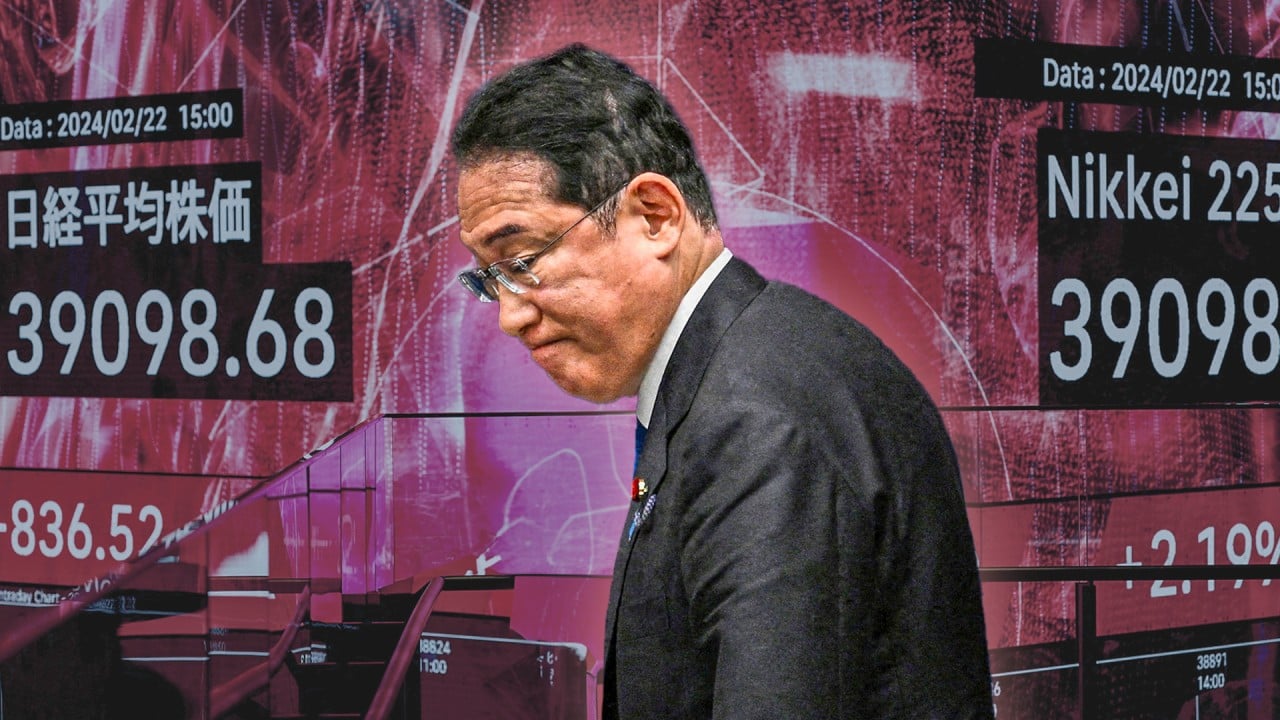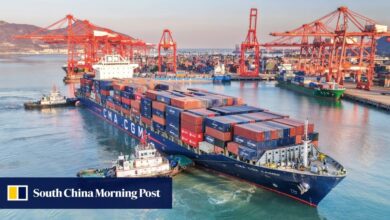China to push supportive monetary policy as financial risks ease: central bank chief

He also said the number of high-risk small and medium-sized banks had “nearly halved from the peak”.
Pan said financial institutions were encouraged to increase support for weak links or in key areas, satisfy “reasonable” consumer financing demands in a more targeted manner and study measures to enhance the coordination of macro policies.
“In the next step, we will strengthen countercyclical and cross-cyclical adjustments and focus on supporting stable expectations, boosting confidence, and supporting the consolidation and strengthening of the economic recovery,” Pan said.
Local government debt pressure is just one of a number of headwinds China’s economy is facing. The country is also in the midst of a protracted slump in the property market, with weak credit demand reflected in some of the key money supply and bank lending data last month.
Official data showed that China’s new bank loans in July came in at a 15-year low at only 260 billion yuan (US$36.5 billion), falling by 85.9 billion yuan from a year earlier.
In the same month, China’s M1 money supply, which consists of cash in circulation and corporate demand deposits and is seen as a major indicator of private business confidence, fell 6.6 per cent year on year to a record low.
China’s gross domestic product (GDP) growth was stronger than expected at 5.3 per cent in the first quarter but moderated slightly to 4.7 per cent in the second quarter. Domestic consumption and income growth remain muted.
The PBOC cut its key short-term policy rate and the mortgage reference rate on July 22 just days after the conclusion of a high-level Communist Party meeting, with analysts expecting more easing in the coming months.
The Chinese central bank has prioritised the stability of the yuan exchange rate to reduce capital outflow risk as a large interest rate differential between China and the US puts depreciation pressure on the yuan.
“Weak growth is likely to lead to more PBOC easing, and given interest rates remain low and risk appetite for domestic assets is still limited, there is still a level of capital outflow pressure,” Lynn Song, chief economist for Greater China at ING, said in a note on Friday.
Overall, analysts expect the Chinese government’s growth target of around 5 per cent for this year could be within reach given ongoing policy support, but a consumption recovery remains uncertain.
In an interview with CCTV last week, Pan highlighted government measures to curb three areas of financial risks in China: local government debt, real estate, and small and medium-sized banks.
In its 2023 Financial Stability Report, the PBOC said there were 337 high-risk banks with total assets of 6.63 trillion yuan, and all of which were small to medium sized lenders.
The National Financial Regulatory Administration (NFRA) said on Wednesday that it would strengthen supervision of major shareholders at small- and medium-sized financial institutions to control their financial risks.
NFRA deputy head Xiao Yuanqi said small and medium-sized financial institutions should focus on their core businesses and not “blindly pursue excessive expansion”.
Source link




